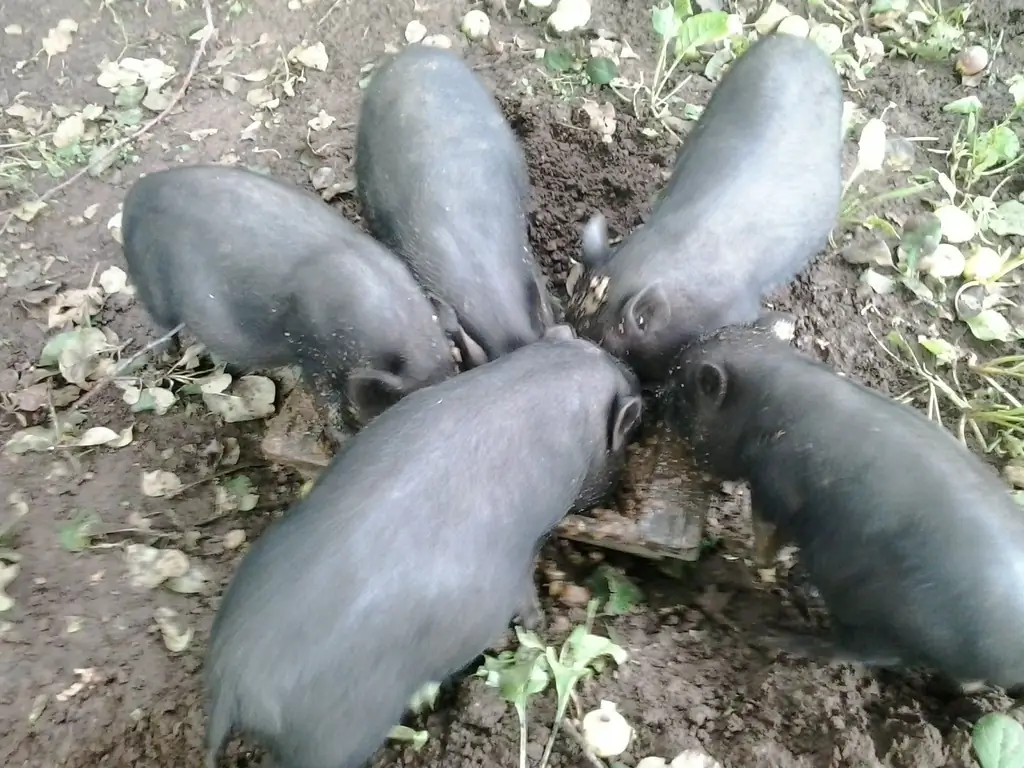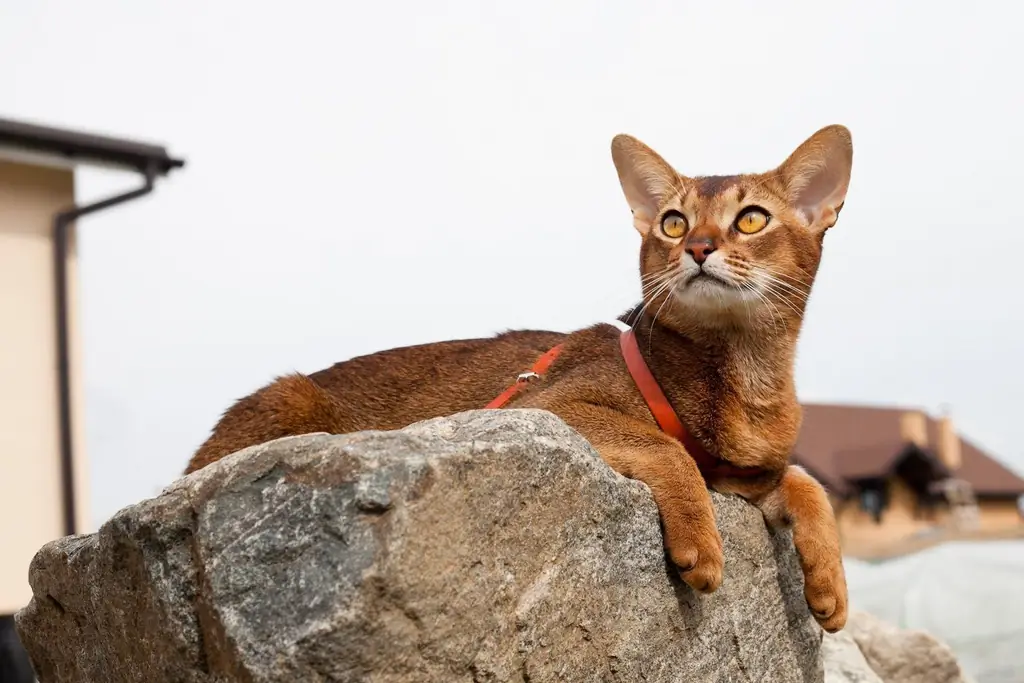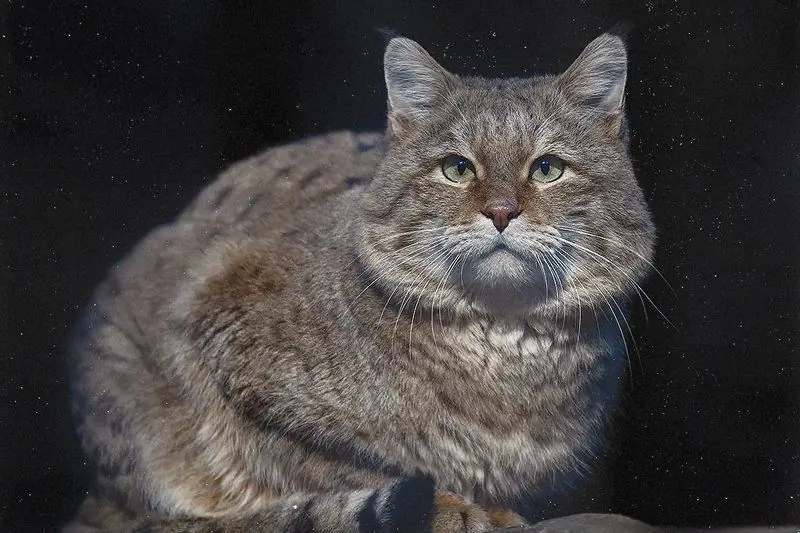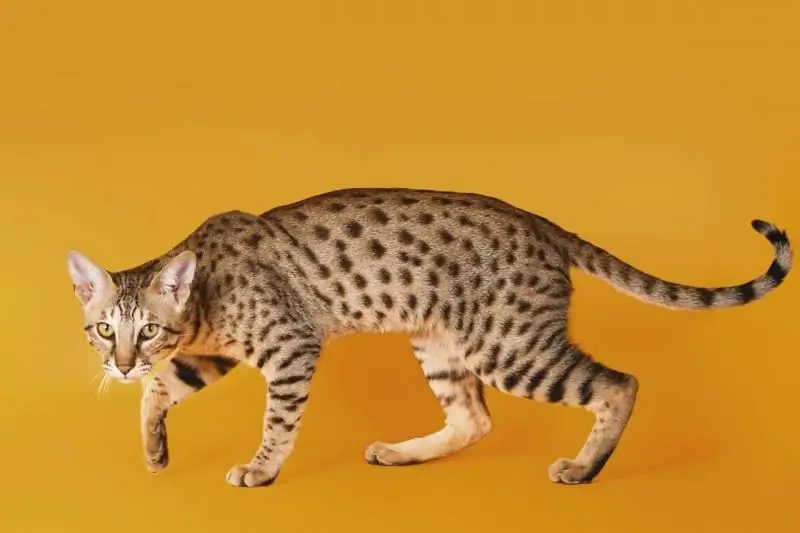
Table of contents:
- Tips for caring for Vietnamese pot bellies
- Breed benefits
- Vietnamese piglet myths: don't make mistakes
- We equip the pigsty and walking area
- Nutritional features of young animals and adults
- How to feed the pigs?
- What treatment is required
- What else do you need to know when breeding piglets?
- Vietnamese pig breeding video
- Author Bailey Albertson [email protected].
- Public 2023-12-17 12:53.
- Last modified 2025-01-23 12:41.
Tips for caring for Vietnamese pot bellies

Domestic pig breeders have recently very popularized the breed of Vietnamese piglets. These animals are really unpretentious and easy to care for. They can even be kept in an apartment (if space permits), which are only stories about celebrities who have adopted pigs as pets! But if you have a private house or summer cottage with a plot, then this is a great reason to learn more about caring for Vietnamese pigs. Not only will you provide yourself with meat, but you can also build a good business.
Content
- 1 Breed advantages
- 2 Myths about Vietnamese piglets: don't make mistakes
- 3 We equip the pigsty and walking area
- 4 Nutritional features of young animals and adults
- 5 What to feed the pigs with?
- 6 What treatment is required
- 7 What else do you need to know when breeding piglets?
- 8 Video about breeding Vietnamese piglets
Breed benefits
Compared to the traditional pig breeds we are accustomed to, raising Vietnamese piglets is much easier and more profitable as it requires less costs.
- Piglets of this breed do not require a lot of grain feed. When calculating the diet, you can safely leave 80% for green forage - weeds, leaves, tops of vegetable crops.
- Thanks to the predominantly succulent herbal feed, the meat is softer and more tender. The fat layer is small due to the mobile lifestyle compared to white pigs.
- Vietnamese piglets are much less susceptible to diseases, so they do not need mandatory vaccinations.
- Pigs grow very quickly and gain weight. They enter puberty at the age of 3-4 months.
- If you are planning to breed Vietnamese piglets, then you can count on two farrows per year. Each litter produces more than 10 piglets. Sows are very attentive to the offspring, so raising and caring will not bring you any special worries.
- Piglets of this breed are distinguished by a calm, balanced character. Sows do not refuse to feed, do not maim the offspring, so everything in the pigsty is usually quiet and measured.
- Contrary to popular belief, piglets are clean and well distinguish between the "toilet" and the sleeping place in the pigsty, which makes cleaning easier.

Most of the diet of pot-bellied Vietnamese piglets is grass
If you protect your pigs well from cold and drafts, as well as correctly calculate their diet, then the breed's shortcomings will not even reveal themselves. It should be borne in mind that roughage is poorly digested, as well as whole raw grains. It is better to cook steamed porridge from crushed grain.
Vietnamese piglet myths: don't make mistakes
Of course, such a breed could not help but become overgrown with legends about its remarkableness. This is especially facilitated by breeders who are ready to exaggerate the benefits in order to sell the product faster and more profitably. Therefore, now I will draw your attention to the most common myths that need to be treated with caution.

Piglets reach a weight of 10 kg by three months of age
- They say that Vietnamese piglets can only eat grass, so you don't need to feed. This is not so: animals, of course, will not starve to death on pasture, but you will not get a good weight gain and offspring.
- Another myth: piglets can reach a weight of 10 kg by one month of age. In fact, the average weight per month is 4-5 kg, and only some specimens grow up to 6-7 kg. Ten kilograms is the normal body weight of a piglet at 2-3 months.
- The Vietnamese pig breed is early maturing, and piglets can be mated at five months of age. This is only partially true under breeding conditions. Indeed, males begin to train skills as early as a month old, and females are ready for fertilization at 3-4 months. But healthy and numerous offspring will be in the event that crossing is carried out when the pig reaches a weight of 30 kg.
Pay attention to these features to avoid future misunderstandings.
We equip the pigsty and walking area
It is better to make a pigsty solid, made of brick or stone. The floor should be made of concrete, with an ebb through which it is convenient to clean the surface. In each cage, make a 3/3 square wooden platform so that the pigs do not lie on the concrete floor during the cold season. Thus, there will be a sleeping place on the platform, and a toilet and a dining room on the concrete.
You can not equip the platforms, but replace them with bedding material:
- straw;
- leaves; sawdust;
- grass.
True, a lot of such material may be needed, and cleaning will take more time. But the spent bedding can be used in the compost pit for fertilization.

Set up a solid pigsty for your piglets
Make the ceilings in the pigsty at least 2 meters, for your convenience. The recommended area of the pen for sows is 4-4.5 square meters, it can accommodate two adult pigs or one with small piglets. An adult boar-producer is enough for a machine with an area of 3 sq. Plan an aisle wide enough for a manure wheelbarrow to pass easily.
Be sure to provide good ventilation in the pigsty to keep the brood healthy and strong during growth.
Vietnamese piglets over three months of age easily tolerate freezing temperatures. But a sow with newborn piglets will require maintaining the temperature at 20C for some time. Therefore, heating will be required: a Russian stove, a gas convector, an air heater.
In the warm season, it is better to keep a herd of piglets outdoors during daylight hours. Constant walking will provide the pigs with strong immunity and better weight gain. For one adult sow, the optimal area will be 1 hundred square meters of land.
Organize a mud bath on the outdoor area: dig a 2x2 m hole about 30 cm deep and fill it with water from time to time. Also, dig in a few logs on the site so that the piglets can scratch their sides on them. Build a light canopy under which you can hide from the sun or rain.
Nutritional features of young animals and adults
Adult Vietnamese pigs eat often, but little by little. In the summer, it is better to feed twice a day - in the morning and in the evening, during the rest of the day they will find food themselves if they graze on the grass. In winter, animals can be fed for lunch. The cost of buying feed will cost you a penny. Small pigs and pregnant females will have to spend money: their diet will require special feed and additives.
Among the grasses, pigs love clover, amaranth and alfalfa the most. In winter, use hay, which will serve as both a good comfortable bedding and food. Boiled potatoes, pumpkin, squash, fodder beets, mixed root vegetables and steamed compound feed or grain will make up the main diet of animals in winter.

Take care of proper feeding
With this diet, a Vietnamese pig is able to gain about 110 kg of live weight in 10 months of life. It is easy enough to calculate the economic feasibility of breeding this breed if you record the amount of feed consumed, both purchased and from your own plot.
How to feed the pigs?









What treatment is required
Vietnamese pigs really rarely get sick. With their unpretentiousness, they are still quite picky about food, well versed in the benefits or dangers of plants, so they are not threatened with poisoning. But prevention from helminths should be carried out regularly, from 45 days, and after - every quarter. To do this, use:
- ecomectin subcutaneously;
- ivermectin subcutaneously;
- albendozdol for food;
- fonbendazole for food.
In the event of an intestinal upset during the transition to new feeds, small pigs are given a solution of "Smekta", for older individuals - "Biovit" for food. For better development, add vitamin complexes to the feed. By the way, experts recommend not to give too many medicines and vitamins, and, if possible, do with folk remedies. For example, pumpkin seeds and salted fish will help get rid of worms, and decoction of oak bark will cure diarrhea.

Vietnamese pot-bellied piglets have strong immunity
While the piglets are small, they need to pierce the iron, for example, the drug "Suiferrovit", on the 3rd and 10th day of life. This gives good growth results.
It is not recommended for deeply pregnant sows to be vaccinated, except for vaccination against salmonellosis in exceptional cases, 40 and 30 days before farrowing. Plague and erysipelas are pierced like this: piglets - according to the schedule, sows - after the cubs are weaned. It is better not to vaccinate during the feeding period.
Weaning of the brood from the mother should be carried out when the piglets reach the age of two months. Sows are very caring, they are ready to feed the cubs to the last, which will lead to complete exhaustion. In addition, at this age, small pigs, as a rule, already eat normal food and do not experience any discomfort.
What else do you need to know when breeding piglets?
If your goal is to raise healthy large pigs, there are a few more rules to follow.

The mating should be carried out at a certain age - about a year
- Do not get small Vietnamese pigs, it is better to wait about a year. Such a pig lives for 20-30 years, and is capable of bringing two broods every year. All the while, you will have larger, stronger offspring.
- Remember: the offspring will be large if the mother is large. You should not expect records from little piglets.
- The size of the boar does not really matter, but it is still desirable that it is not small either. From the boar, the piglets will be transferred, endurance, assertiveness, vitality. If a boar is a lazy, amorphous, obese breeder, then he will not give good offspring.
- If in the first weeks of life the piglets were left without a sow, then usually they will lag behind their peers in both growth and development.
- Feeding piglets - suckers with cow or goat milk gives tangible results, and is especially important if the cubs are left without a mother.
- There is a myth that sows are easy to pig by themselves, without assistance. This is not true. Sometimes labor is delayed for a long time, the fetus is not located correctly, and you need to be an obstetrician, or even call a veterinarian. Better to keep farrowing under control.
- In the case of a serious illness of a piglet, if you managed to get out of it, do not expect that it will develop in the same way as its healthy brothers.
- If there is such an opportunity, 12 hours after covering the female with one male, use the second, or even better, again after 12 hours, confirm with the third manufacturer. If, at the same time, all individuals are not related, then the offspring, when they grow up, can greatly surpass their parents in size.
Vietnamese pig breeding video
If you have experience in keeping piglets of this breed, share with us in the comments, or ask questions that you have. We hope our tips will help you grow healthy, large and robust individuals.
Recommended:
Abyssinian Cat: Breed Origin, Appearance Standards, Character Traits, Rules Of Care And Feeding, Kitten Selection, Photo

The history of the emergence of the Abyssinian breed. Features of appearance and behavior. Proper care and nutrition. Pet selection. Breeding Abyssinians. Host Reviews
Burmese Cat: The Origin Of The Breed, External Features, Photo Of A Sacred Cat, Conditions Of Keeping And Care, Owner Reviews

History of the Burmese breed. External characteristics of the breed. The character and behavior of Burma. Diseases of the breed. Care and hygiene, Burma feeding. Breeding Burma. Reviews
Steppe Cat: Lifestyle, Habitat, Keeping In Captivity, Breeding And Feeding Of The Cat

The appearance of a steppe cat. Habitat. Life in the wild. What do spotted cats eat? Reproduction and life expectancy. Wild cats in captivity
Usher's Cat: The Origin Of The Breed, External Features, Photo Of The Cat, Conditions Of Keeping And Care, Breeding Pets, Reviews Of The Owners

History of Usher cats. Appearance and character. Asher's health and longevity issues. Buying a kitten. Care and hygiene for the usher. Feeding. Breeding
American Shorthair Cat: Description Of The Breed, Characteristics Of Character And Behavior, Rules Of Care And Feeding Of Cats, Photo

The history of the origin of the American shorthair cat, appearance and character. Choosing a kitten. Animal care rules. Health and nutrition. Breeding
